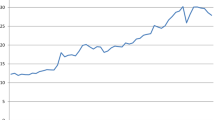Abstract
We develop a theory of a multinational corporation’s optimal mode of entry in a new market. The foreign firm can choose between a licensing agreement, a wholly owned subsidiary or shared control (joint venture). In an environment in which property rights are insecure, opportunism is possible, and the identification of new business opportunities is costly, we show that the relationship between the quality of the institutional environment and the mode of entry decision is non-monotonic. Licensing is preferred if property rights are strictly enforced, while a joint venture is chosen when property rights are poorly enforced. For intermediate situations, the better use of local knowledge made possible by shared control under a joint venture works as a double edged sword. On the one hand, it makes the monitoring activity of the multinational more credible, on the other it offers insurance to both parties, potentially compromising the incentives faced by the local partner.
Similar content being viewed by others
References
Aghion, P., Tirole, J.: Formal and real auhority in organizations. J Polit Econ 105, 1–29 (1997)
Anand, B.N., Khanna, T.: Do firms learn to create value? The case of alliances. Strat Manag J 21, 295–315 (2000)
Antras, P.: Incomplete contracts and the product cycle. Am Econ Rev 95, 1054–1073 (2005)
Antras, P., Helpman, E.: Global sourcing. J Polit Econ 112, 552–580 (2004)
Asiedu, E., Esfahani, H.S.: Ownership structure in foreign direct invetsment projects. Rev Econ Stat 83, 647–662 (2001)
Bai, C.-E., Tao, Z., Wu, C.: Revenue sharing and control rights in team production: Theories and evidence from joint ventures. Rand J Econ 35, 277–305 (2004)
Barba Navaretti, G., Venables, A.J., Barry, F., Ekholm, K., Falzoni, A., Haaland, J., Midelfart, K.-H., Turrini, A.: Multinational Firms in the World Economy. Princeton University Press, Princeton (2004)
Dunning, J.: International Production and the Multinational Enterprise. Allen and Unwin, London (1981)
Glass, A.J., Saggi, K.: Licensing versus direct invetsment: implications for economic growth. J Int Econ 56, 131–153 (2002)
Grossman, S., Hart, O.: The costs and benefits of ownership: A theory of vertical and lateral integration. J Polit Econ 94, 691–719 (1986)
Hart, O., Moore, J.: Property rights and the nature of the firm. J Polit Econ 98, 1119–1158 (1990)
Hauswald, R., Hege, U.: Ownership and control in joint ventures; Theory and evidence. Discussion Paper 4056, CEPR (2003)
Horstmann, I.J., Markusen, J.R.: Licensing versus direct investment: A model of internalization by the multinational enterprise. Can J Econ 20, 464–481 (1987)
Lee, J.-Y., Mansfield, E.: Intellectual property protection and U.S. foreign direct investment. Rev Econ Stat 78, 181–186 (1996)
Markusen, J.R.: Contracts, intellectual property rights and multinational investment in developing countries. J Int Econ 53, 189–204 (2001)
Markusen, J.R.: Multinational Firms and the Theory of International Trade. MIT Press, Cambridge (2002)
McCalman, P.: Foreign direct investment and intellectual property rights: Evidence from Hollywood’s global distribution of movies and videos. J Int Econ 62, 107–123 (2004)
Mueller, T., Schnitzer, M.: Technology transfer and spillovers in multinational joint ventures. J Int Econ 68, 456–468 (2006)
Nakamura, M., Xie, J.: Nonverifiability, noncontractability and ownership determination models in foreign direct investment, with an application to foreign operations in Japan. Int J Ind Organ 16, 571–599 (1998)
Smarzynska Javorcik, B., Saggi, K.: The composition of foreign direct investment and protection of intellectual property rights: Evidence from transition economies. Eur Econ Rev 48, 39–62 (2004)
Smarzynska Javorcik, B., Saggi, K.: Technological asymmetry among foreign investors and mode of entry. World Bank Working Paper 3196 (2004)
Smarzynska Javorcik, B.K., Wei, S.-J.: Corruption and cross-border investment: Firm–level evidence. Mimeo, The World Bank (2002)
Smith, P.J.: How do foreign patent rights affect US exports, affiliate sales and licenses?. J Int Econ 55, 411– (2001)
UNCTAD: World Investment Report. New York/Geneva: United Nations (2000)
Author information
Authors and Affiliations
Corresponding author
Additional information
We are grateful to the Centro Studi Luca d’Agliano for providing financial support. For useful comments we would like to thank Klaus Desmet, Cecilia Testa, Henry Wan and Gerald Willmann and seminar participants at Cornell, Ente Luigi Einaudi, Fundacao Getulio Vargas, Kiel, Milano, Universidad de Sao Paolo, the Midwest International Economics Meetings in Indianapolis, SAET VI conference in Rhodes, and the City University of Hong Kong Conference on Intellectual Property Rights.
Rights and permissions
About this article
Cite this article
Che, J., Facchini, G. Cultural differences, insecure property rights and the mode of entry decision. Econ Theory 38, 465–484 (2009). https://doi.org/10.1007/s00199-007-0323-7
Received:
Accepted:
Published:
Issue Date:
DOI: https://doi.org/10.1007/s00199-007-0323-7




